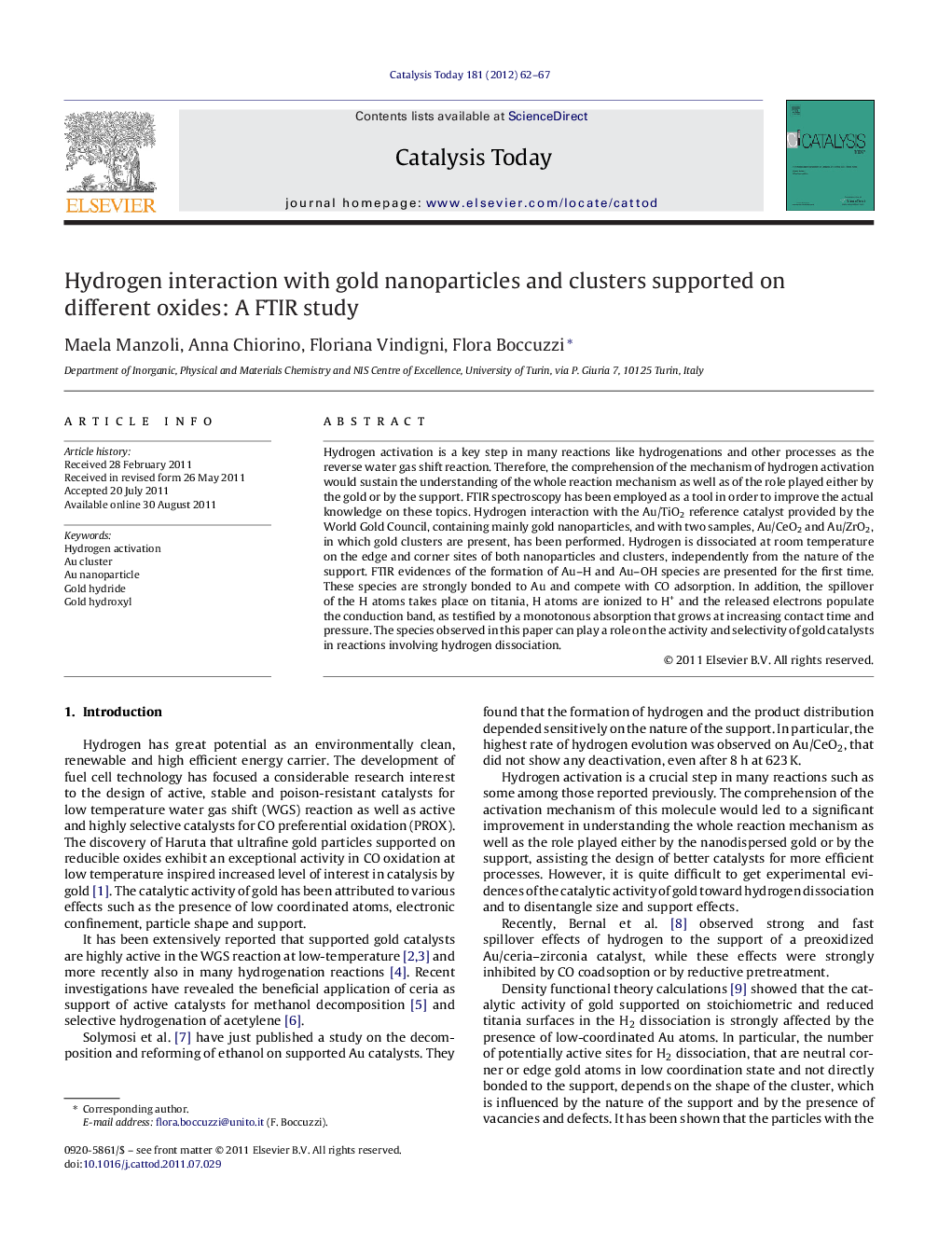| Article ID | Journal | Published Year | Pages | File Type |
|---|---|---|---|---|
| 55440 | Catalysis Today | 2012 | 6 Pages |
Hydrogen activation is a key step in many reactions like hydrogenations and other processes as the reverse water gas shift reaction. Therefore, the comprehension of the mechanism of hydrogen activation would sustain the understanding of the whole reaction mechanism as well as of the role played either by the gold or by the support. FTIR spectroscopy has been employed as a tool in order to improve the actual knowledge on these topics. Hydrogen interaction with the Au/TiO2 reference catalyst provided by the World Gold Council, containing mainly gold nanoparticles, and with two samples, Au/CeO2 and Au/ZrO2, in which gold clusters are present, has been performed. Hydrogen is dissociated at room temperature on the edge and corner sites of both nanoparticles and clusters, independently from the nature of the support. FTIR evidences of the formation of Au–H and Au–OH species are presented for the first time. These species are strongly bonded to Au and compete with CO adsorption. In addition, the spillover of the H atoms takes place on titania, H atoms are ionized to H+ and the released electrons populate the conduction band, as testified by a monotonous absorption that grows at increasing contact time and pressure. The species observed in this paper can play a role on the activity and selectivity of gold catalysts in reactions involving hydrogen dissociation.
Graphical abstractFigure optionsDownload full-size imageDownload high-quality image (147 K)Download as PowerPoint slideHighlights► Hydrogen interaction with supported gold nanoparticles and clusters. ► H2 dissociates on edge and corner Au sites independently from the support. ► Au–H and Au–OH species strongly bonded on gold and H atoms on titania. ► Hydrogen competes with CO adsorption on gold.
